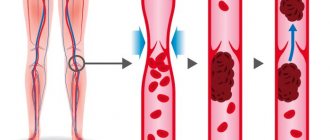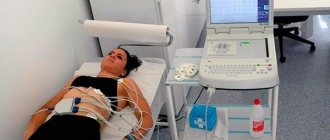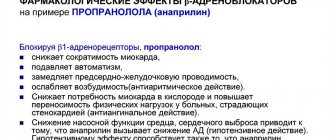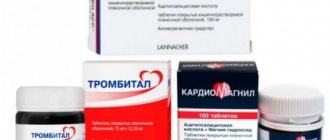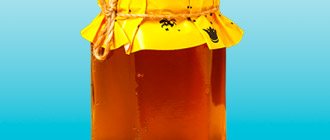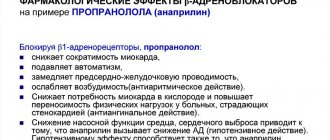Myocardial infarction is one of the main problems of modern medicine. Many deaths occur precisely for this reason. An attack can happen to anyone and so suddenly that first aid measures may not help the patient. The main role in preventing the onset of the disease is played by the prevention of myocardial infarction.
A healthy lifestyle as a measure to prevent myocardial infarction
Strictly speaking, the treatment and prevention of many diseases depend not so much on the qualifications of doctors and the level of medicine in general, but on the patient himself. A healthy lifestyle helps prevent many diseases, including heart attack.
The concept of a healthy lifestyle includes the following components:
- Physical activity;
- Balanced diet;
- Rejection of bad habits.
Physical activity is important for our health, and this is an undeniable fact. However, you need to exercise wisely. If you have any diseases, then you should start training after consultation with a specialist. Even if in general you feel absolutely healthy, you need to increase the intensity of exercise gradually, without trying to break all existing sports records in one day.
If your busy schedule or other circumstances don’t allow you time to visit a gym, you can start to use the elevator less, walk instead of driving to work (if possible), or go for a walk on the weekends to stay in shape. Any exercise helps normalize weight, increases physical endurance and resistance to infectious diseases, gives courage and improves mood.
Rational nutrition implies that the food consumed should be a complete source of nutrients necessary for the body (proteins, fats and carbohydrates), vitamins and minerals. In addition, the calorie content of the diet matters, that is, the number of calories consumed should be approximately equal to energy expenditure. Excess calories are stored as fat deposits, leading to excess weight. And it, in turn, creates an extra load on the heart muscle, disrupts breathing, reducing oxygen saturation in the blood, and contributes to the development of atherosclerosis.
If we talk in more detail about the diet that should be followed to prevent myocardial infarction, then it must include vegetables and fruits, lean meats and fish, low-fat dairy products, and cereals. You should avoid fatty, fried, spicy and overly salty foods.
Giving up bad habits, primarily smoking and alcohol abuse, is a necessary component of a healthy lifestyle. The vast majority of smokers have problems with not only the respiratory but also the cardiovascular systems. Nicotine leads to the development of atherosclerosis, causes spasm of blood vessels, including coronary vessels, and disrupts the supply of oxygen to organs and tissues.
Excessive alcohol consumption is often accompanied by an increase in blood pressure, threatening to complicate the course of existing coronary heart disease by developing myocardial infarction. Therefore, if you have high blood pressure, it is better to minimize or eliminate the consumption of alcoholic beverages.
Heart attacks
CARDIAC ISCHEMIA
Coronary artery disease (CHD) is defined as acute or chronic damage to the heart caused by a decrease or cessation of blood supply to the myocardium (heart muscle) as a result of pathological changes in the coronary artery system. The basis of this disease is the discrepancy between the ability to supply the myocardium with oxygen and the need for it.
The human heart works constantly throughout his life and needs a constant supply of oxygen and nutrients. To achieve this, the heart has its own branched system of blood vessels, which in appearance resembles a crown or crown. Therefore, the vessels of the heart are called coronary or coronary. The work of the heart is continuous, and the movement of blood through the vessels of the heart must also be continuous.
Clinical manifestations of coronary artery disease include angina pectoris, myocardial infarction, cardiac rhythm and conduction disturbances, and heart failure.
Despite significant advances made over the past three decades in the prevention, diagnosis and treatment of coronary artery disease, this disease is currently the main cause of premature mortality and disability in most industrialized countries.
Myocardial ischemia is associated with a decrease in vessel diameter caused by both the development of atherosclerotic plaque and changes in vascular tone as a result of dysregulation. The consequence of ischemia is a violation of metabolism, electrical functions and myocardial contractility.
Risk factors for atherosclerosis and coronary artery disease
Unchangeable
- Age factor (aging of the body);
- The influence of gender (the predominance of IHD in young and middle age in men); for women, the dangerous age occurs after 50 years;
- Hereditary predisposition (coronary heart disease, heart attack, cerebral stroke, in at least one of the direct relatives: parents, grandparents, especially if the disease began before the age of 55);
Correctable
- Arterial hypertension (more than 140/90 mm Hg at any age);
- Smoking (one of the most significant risk factors!);
- Unbalanced diet (consumption of high-calorie foods rich in saturated fats and cholesterol);
- elevated blood cholesterol (more than 5 mmol/l or more than 200 mg/dl);
- Excess body weight and sedentary lifestyle;
- Insufficient physical activity;
- Psycho-emotional stress.
MYOCARDIAL INFARCTION is one of the clinical forms of coronary heart disease, accompanied by the development of ischemic myocardial necrosis (tissue death) caused by an acute violation of coronary circulation as a result of a discrepancy between the need of the heart muscle for oxygen and its delivery to the heart. Over the past 20 years, mortality from myocardial infarction in men has increased by 60%. The heart attack made me look much younger. Nowadays it is no longer uncommon to see this diagnosis in thirty-year-olds. So far it spares women up to 50 years of age, but then the incidence of heart attacks in women is compared with the incidence in men.
Myocardial infarction occurs when blood flow to the heart muscle is significantly reduced or stopped as a result of prolonged spasm or blockage of the arteries supplying the heart muscle. Contributing factors may include mental stress, nervous shock, smoking, and excessive physical activity.
The onset of myocardial infarction is considered to be the appearance of an attack of intense, painful, often accompanied by a feeling of fear of approaching death, sometimes extremely acute (“dagger-like”) and prolonged (more than 30 minutes, often many hours) chest pain, which does not go away after taking nitroglycerin. The pain can radiate to the left arm, lower jaw, ear, stomach area, or spine. Sometimes, especially in old age, the onset of a heart attack may differ from the picture described above: pain behind the sternum may be slight or completely absent, or may first appear in the area of the left shoulder, larynx, lower jaw, or left shoulder blade. Also, the onset of a heart attack can manifest itself in the form of lack of air, cough with foamy sputum, dizziness, nausea, vomiting, confusion. Such forms are called atypical.
The first signs of myocardial infarction are:
- severe, prolonged chest pain (more than 30 minutes)
- no improvement after taking nitroglycerin
- feeling of "fear of death"
- pale face, cold forehead
- acute feeling of pressure in the chest (a feeling of a “clenched fist”)
- sometimes (especially in women) vomiting
- lack of air, shallow breathing
What to do?:
- call an ambulance
- provide psycho-emotional peace
- ensure a comfortable, least painful position (sitting with your legs slightly raised up and your knees bent)
- unbutton your clothes, free your neck
- provide access to fresh air (open a window)
- take a nitroglycerin tablet under the tongue, repeat after 3 minutes (but not more than 3 tablets). Attention: nitroglycerin lowers blood pressure, so the position must be sitting or lying down, and the number of tablets should not exceed 3.
- Chew ½ aspirin tablet
The measures taken can significantly reduce the development of complications of myocardial infarction (cardiogenic shock, pulmonary edema, etc.) and prevent death.
PREVENTION:
NUTRITION Numerous clinical studies and observations have confirmed the effectiveness of a low-calorie diet rich in vegetables, fruits, fish, grains and nuts, and garlic in the prevention of cardiovascular diseases. On the contrary, with excessive consumption of foods rich in fats and lipids, the risk increases by 2.5-5 times. The amount of salt received daily in all forms should not exceed 6 grams, and in the case of arterial hypertension (AH) - 5 grams.
It has been noted that among people who eat fish at least once a week, the risk of death from a heart attack or stroke is on average 52% (!) lower than among those who eat fish less often. Three or more servings of vegetables and fruits per day reduce cardiovascular risk by 27%, and the risk continues to decrease as their consumption increases.
Nutrition is an important factor in controlling blood glucose levels in patients with diabetes, since the risk of cardiovascular disease in people with this disease is high.
CONTROL OF BLOOD PRESSURE Various studies prove that arterial hypertension increases the risk of developing coronary artery disease and, in particular, myocardial infarction. With systolic blood pressure 180 mmHg. and higher, IHD develops 8 times more often than with normal blood pressure. Therefore, the need to prevent hypertension is beyond doubt, and implies monitoring blood pressure, promptly identifying and preventing increases in blood pressure, strictly following his instructions when a doctor prescribes drug therapy, and also combating smoking, overeating, excessive consumption of table salt and excess body weight.
BODY WEIGHT AND PHYSICAL ACTIVITY The risk of death from coronary heart disease in physically inactive people is 3 times higher than in physically active people. Regular exercise normalizes cholesterol levels in the blood, blood pressure, blood sugar levels and, of course, helps get rid of excess weight. There is also an opinion that properly selected physical exercises not only strengthen the cardiovascular system, but also have a positive effect on mood and are successfully used in the treatment of depression. Young healthy people can regularly run in the morning, do morning exercises, and play various sports. For older people, as well as those suffering from coronary heart disease, and even more so for those who have suffered a myocardial infarction, a set of physical exercises (physical exercises) should be prescribed by a general practitioner or cardiologist.
Excess body weight (obesity) significantly increases the risk of developing coronary heart disease; proper nutrition and regular exercise help normalize weight.
SMOKING Smoking increases the risk of myocardial infarction, sudden death and the development of atherosclerosis, leads to an increase in total cholesterol in the blood, causes damage to the walls of blood vessels, and reduces its elasticity. In addition, cigarette smoke contributes to the development of conditions that lead to blood clots. The volume of hemoglobin that delivers oxygen is reduced. Quitting smoking reduces the risk of cardiovascular accidents by 60%.
The effectiveness of the most active strategies using psychotherapy, nicotine replacement patches and tablets reaches 40%.
ALCOHOL Alcohol abuse significantly increases the risk of coronary heart disease through other risk factors, increasing blood pressure, body weight, and blood cholesterol levels. In addition to influencing the development of coronary artery disease, alcohol contributes to damage to the heart, liver, pancreas, central nervous system, and significantly increases the risk of strokes, especially hemorrhagic and subarachnoid hemorrhages, hypertension, arrhythmias, sudden death, alcoholic cardiomyopathy, and breast cancer in women.
PSYCHOLOGICAL FACTORS The important role of factors such as depression, loss of social support, stress, and emotional personality in the development of MI and strokes is generally recognized. Stress and mental overstrain contribute to an increase in blood cholesterol levels, heart rate, and cause vasospasm. In addition, social and professional stress can contribute to the emergence of other risk factors for the development of coronary artery disease: increased blood pressure, increased smoking intensity, overeating, or even lead to coronary artery thrombosis.
Treatment of existing diseases
A special place is occupied by the treatment of existing diseases that may be complicated by the development of myocardial infarction. First of all, these include cardiovascular problems that can lead to it: atherosclerosis, coronary heart disease, arterial hypertension. They can be treated with medications prescribed by a cardiologist. But even if a person does not have such diseases, upon reaching the age of 40, an annual ECG is recommended for preventive purposes.
Sleep problems can also provoke the development of myocardial infarction. The first place among them is occupied by complicated snoring - obstructive apnea syndrome (OSAS). In this condition, during a person’s sleep, normal breathing is disrupted against the background of snoring, and episodic breathing occurs, which causes oxygen starvation of the heart muscle, especially one already affected by coronary artery disease. And this can lead to a heart attack...
According to statistics, about a third of patients with myocardial infarction suffer from sleep apnea. Therefore, for complete prevention of heart attack, the problem of snoring and OSA must be solved. Doctors at the Center for Sleep Medicine at the Rehabilitation Clinic in Khamovniki have extensive experience in their treatment; Moreover, they specialize in these disorders.
Watch an interview with a patient who had multiple myocardial infarctions before being diagnosed with sleep apnea.
Don't want your sleep problems to cause a myocardial infarction? Contact the Sleep Medicine Center at the Rehabilitation Clinic in Khamovniki. We will definitely help you! Ask questions and sign up for a consultation by phone: +7.
Main risk factors
Cardiovascular diseases, including myocardial infarction, appear due to the fault of the person himself. An unhealthy lifestyle directly affects your health.
“Accelerators” of the occurrence of myocardial infarction are:
- smoking, alcohol addiction;
- high blood cholesterol;
- sedentary lifestyle;
- obesity, overweight;
- high blood pressure;
- diabetes;
- age after 50 years, etc.
It is worth noting that the risk of developing a heart attack in men is much higher than the risk of a heart attack in women. In men, a heart attack can occur at 40–50 years of age, and in modern living conditions it very often occurs before the age of 30. In women, attacks usually occur a little later, between 50 and 60 years of age.
Knowing the main risk factors that primarily affect a person will help manage the risk of myocardial infarction. A person can independently eliminate any risk factors that provoke the disease.
UZ "Mogilev City Emergency Hospital"
Prevention of myocardial infarction is divided into primary and secondary.
Since a heart attack provokes the gradual death of cardiac muscle cells, the main requirement of primary measures comes down to a radical change in lifestyle to maintain the performance of the myocardium and slow down the development of the pathological process.
Secondary measures are necessary to prevent recurrent attacks and are based on drug therapy with the possible use of traditional methods of treatment.
The basic principles of preventing myocardial infarction are:
- quitting smoking and alcohol abuse;
- gradual increase in physical activity;
- correction of diet;
- monitoring health status and its indicators;
- positive attitude;
- taking medications prescribed by the doctor;
- use of folk recipes.
Primary prevention
The main preventive measure to prevent primary myocardial infarction is a healthy lifestyle and constant monitoring of health indicators. It is important to remember that after secondary and tertiary cases of attack, the rules of primary prevention should be observed to a greater extent.
The goal of primary preventive methods is the treatment of chronic ischemic heart disease and the elimination of factors that can cause acute forms of heart disease and other severe consequences. - source:
Nutrition
To prevent a heart attack, it is important to adjust your daily diet. The recommendations are as follows:
- include in the diet or increase the amount of consumption of greens, green vegetables, root vegetables;
- regularly consume low-fat fish dishes, poultry and seafood dishes, but avoid frequent consumption of animal meat;
- eat fruits raw (only fresh);
- limit the amount of salt and fatty foods in the diet;
- think over a menu, the dishes of which should contain a sufficient amount of vitamins and minerals to replenish their norm (in particular, calcium and magnesium).
- Such a diet will help reduce blood cholesterol levels and restore vitamin balance to maintain immunity.
Physical exercise
To keep your body in good shape, you need to be physically active whenever possible.
It is not recommended to start engaging in strenuous sports without prior preparation and with an unprepared body.
A set of exercises and sports must be discussed with your doctor in advance. Activities such as walking, swimming, running, and skiing are allowed in the absence of contraindications. It is important not to overload the body; it is enough to spend about half an hour on physical activity three times a week.
This activity reduces the risk of a heart attack by 30%, helps maintain weight within normal limits and distributes the load on the heart muscle.
Rejection of bad habits
An important requirement for a healthy lifestyle is giving up bad habits - active smoking and alcohol abuse. These factors provoke the risk of heart attack, ischemia and complications after them due to the negative impact on the cardiovascular system.
Smoking should be completely avoided, and the consumption of a minimum amount of alcohol is acceptable in the absence of any contraindications. It is allowed to drink any alcoholic beverages without mixing, no more than 20 g for women and 30 g for men, translated into pure alcohol content.
Weight control
Constant control of body weight reduces the risk of heart attack. Excess weight puts additional stress on the myocardium, which provokes attacks. It is also important to avoid underweight and sudden fluctuations in weight, as this leads to malfunctions of the body.
The main indicator for weight control is the BMI formula. Also, when taking measurements, it is worth taking into account individual characteristics and body type.
Pressure control
Pressure control is an important preventive way to prevent a heart attack. For people suffering from hypertension, it is important to pay special attention to blood pressure, since elevated values place an increased load on the myocardium, which impairs its performance.
It is recommended to use a device for measuring blood pressure (tonometer), regularly take measurements and check the instructions for normal blood pressure indicators. It is necessary to ensure that it does not rise above 140/90 mmHg, and if there is a tendency for pressure surges or a strong increase, be sure to consult a doctor and start taking medications to normalize it.
Positive emotions
Positive emotions are important for healing many diseases, and heart attack is no exception. It is necessary to tune in to favorable results and prognosis of therapy, try to avoid stressful situations and disorders.
If it is difficult for a patient to control emotions, it is recommended to take sedatives of herbal origin, for example, motherwort tincture.
Taking blood tests
An important criterion for preventive therapy is monitoring the results of blood tests, in particular, glucose levels and cholesterol levels, LDL. These values make it possible to check the state of lipid balance in the body, which deviates from the norm in the case of atherosclerosis, and to identify the development of diabetes mellitus, which increases the risk of myocardial infarction.
Timely doctor visits
Visiting a doctor for people at high risk for heart attack is mandatory and should occur regularly. It is the doctor who, after interviewing the patient and analyzing the studies performed, can determine the development of the disease and its stage, as well as prevent complications.
Secondary prevention
Secondary preventive measures primarily require taking medications previously prescribed by a doctor after the first attack of a heart attack. Also, in the absence of contraindications, it is recommended to combine drug therapy with the use of folk remedies.
Secondary prevention of myocardial infarction occurs with constant monitoring of the condition using ultrasound, ECG with stress, and Holter monitoring.
Use of medications
To prevent recurrence of a heart attack, the doctor prescribes medications from the following groups:
Anticoagulants and antianginal agents that lower blood cholesterol levels.
The main medications to prevent recurrent attacks are Aspirin. The use helps to stop the formation of blood clots, which are the main cause of myocardial infarction.
The effectiveness of Aspirin for ischemia depends on the dosage, in particular, low dosages are recommended for stable health conditions, and increased amounts of the drug should be taken by people suffering from periodic pain and fever.
Acetylsalicylic acid can help not only avoid relapses, but also reduces the chances of initially experiencing a heart attack. The main thing is to avoid overdose. The maximum amount taken per day is from 75 to 150 mg.
Anti-cholesterol diet. The diet does not allow the presence of animal fats, fatty meats, any sausage, or sweets on the table. The basis of the diet is cereals, vegetables, dietary dairy products, fruits, chicken, and rabbit. Complete cessation of tobacco and alcohol. The very first cigarette or drop of alcohol can cause severe vasospasm. Physiotherapy. The load is prescribed by a specialist based on data on your well-being. Fast walking is allowed with a gradual increase in the distance covered by the patient, exercises in the gym under the guidance of an instructor. Sex is allowed 2 months after illness, if the patient is able to climb 2 floors up, and his pulse does not exceed 120 beats per minute.
In addition to basic medications, it is recommended to include vitamin supplements in your treatment to maintain health and immunity. These include:
"Magnesium B6", actively involved in the normalization and restoration of heart rhythm. Its use is especially important for people suffering from such a complication of a heart attack as heart disease, which is necessary to maintain heart health and maintain its functionality.
“L-Carnitine”, which affects overall well-being and provides a boost of vivacity and energy. Its influence helps to endure the disease with less physical and mental costs.
Fish oil, which contains fatty acids that prevent the development of blood clots.
Complications and methods of dealing with them
Since myocardial infarction is a condition in which damage is caused to the most vital organ, it is often accompanied by negative consequences, including:
- risk of stroke or recurrent heart attack,
- heart failure,
- aneurysm,
- arrhythmia,
- arterial hypertension,
- ventricular fibrillation,
- violation of the integrity of the heart muscle.
Ventricular fibrillation and disruption of the integrity of the heart can lead to death in a short time and require extreme measures - the use of electric shock, artificial respiration.
When diagnosing other complications, it is important to begin therapy with drugs that affect the restoration of heart rate and blood pressure, prescribed for stroke. It is also important to maintain bed rest and avoid physical and mental stress until the condition improves.
Myocardial infarction is a serious heart disease, the complete cure of which is almost impossible. To avoid its occurrence, you need to adhere to the rules of primary and secondary prevention: take the necessary medications, balance your diet and stop smoking.
It is possible to prevent a heart attack if you take prevention seriously. This is easier than having a long and painful recovery from the disease, and then still returning to restrictions and taking medications.
Patient Reminder
o The threat of a recurrent heart attack is increased by four main factors: atherosclerosis, high blood pressure, increased blood clotting and carbohydrate metabolism disorders.
These risk factors can only be controlled with the help of properly selected drug therapy.
o To slow down the further development of atherosclerosis, it is important to prevent the formation of fatty plaques in the vessels.
For this purpose, drugs from the statin group are prescribed. Beta blockers help the heart work more calmly. So-called angiotensin-converting enzyme inhibitors reduce the effect of the vasoconstrictor angiotensin and normalize blood pressure.
o You cannot change the dosage of medications at your own discretion.
If any problems arise, the doctor will adjust the course of treatment.
for recovery after a heart attack :
minimum fat, nothing fried or spicy, more fiber, dairy products, fruits, vegetables, fish.
We will have to give up sausages and sausages, ready-made semi-finished products
(dumplings, cutlets...) - they contain a lot of hidden fats that increase cholesterol levels.
For the same reason, pates, liver dishes, offal, and caviar are prohibited.
Milk fat is also dangerous: you will have to exclude butter; fatty cottage cheese, cheese, milk, kefir, sour cream, cream. When cooking chicken or turkey, all fat and skin must be removed from the carcass.
And of course, a minimum of salt
.
Vodka, cognac and other strong drinks are canceled.
But
you can afford a glass of natural dry red wine
; this is a good prevention of atherosclerosis.
You'll have to change some habits too. If you used to smoke, cigarettes are now completely taboo
.
To restore the functioning of the heart muscle, it is important to engage in physical therapy. Walking is a great restorative.
After just one and a half to two months of training, you can walk at a pace of up to 80 steps per minute without shortness of breath or weakness. And over time, switch to very fast walking - up to 120 steps per minute.
Useful: climbing stairs, cycling, swimming. Dancing
2-3 times a week for 30-40 minutes.
However , make sure that your heart rate during exercise does not exceed more than 70% of the threshold.
How to calculate this? From 220 you need to subtract your own age - this is the maximum heart rate. Then we calculate the percentages. For example, for a 60-year-old person, the threshold load is calculated as follows: 220–60 = 160 heart beats per minute, and 70% will be 112. This figure should be a guideline. But, if unpleasant sensations appear at this frequency, the load needs to be reduced.
Attention!
After a heart attack, lifting heavy objects is strictly contraindicated.
What is the prevention of heart attack?
Reducing the influence of avoidable risk factors for the disease on the body helps to significantly reduce the likelihood of developing atherosclerosis and, accordingly, a heart attack. This means you only need to follow a few guidelines:
- Stop smoking.
- Do not abuse alcohol. High-quality alcoholic drinks are good for the heart and blood vessels, but only in small quantities and only 1-2 times a week.
- Normalize your weight, and for this you need to develop the right nutrition program.
- Increase physical activity, it is best to do a set of physical exercises every day, walk a lot, do cycling, and ski in winter.
- Monitor your blood pressure. If you have hypertension, you must take the medications prescribed by your doctor.
- Treat chronic diseases. In case of diabetes, it is necessary to reduce glucose to normal and try to maintain this indicator constantly.
- Learn to cope with stress. Various relaxing techniques, yoga, and hobbies help to react less psycho-emotionally to life’s troubles.
- Always try to get proper rest and sleep.
Compliance with all of the above rules from youth not only significantly reduces the risk of a heart attack, but also prevents the development of somatic diseases, delays age-related changes, and allows you to be active for many years.
Consequences of a heart attack and their treatment
After a heart attack, a scar remains at the site of necrosis, which means that part of the heart muscle in this place does not function as it should. Such a change leads to chronic heart failure, rhythm disturbances, the formation of an aneurysm and the appearance of blood clots. Treatment of the consequences of a heart attack is carried out under the supervision of the attending physician. In some cases, patients are prescribed a number of medications for a long period, and surgical intervention is necessary for an aneurysm. After a heart attack, patients should remember that their likelihood of recurrent necrosis is significantly higher compared to healthy people. Its risk can be reduced by following all the rules of a healthy lifestyle and following your doctor’s recommendations. In our clinic, we employ professional cardiologists of the highest category, expert doctors who conduct comprehensive examinations and treatment under constant dynamic supervision.
Types of prevention
In the prevention of heart attack, primary and secondary are distinguished.
Primary prevention of myocardial infarction is carried out in those patients who have never had an attack, but have other cardiovascular pathologies and risk factors for a heart attack. Primary prevention measures include lifestyle adjustments and treatment of existing pathologies that can lead to a heart attack.
Secondary prevention of myocardial infarction is carried out in that category of patients who have already suffered an attack. It is aimed at preventing relapse of the disease. It is carried out after the patient has completed a course of treatment and rehabilitation and under the careful supervision of the attending physician.
The set of measures for primary and secondary prevention is the same, but the intensity is different. Those who have not suffered a heart attack are allowed greater stress on the body, unlike those who have already suffered the disease.
Physical exercise
One of the methods for preventing heart attacks is regular physical activity. They have a positive effect on the entire body and prevent the occurrence of many serious diseases. Physical activity can be of a different nature: you can engage in a specific sport, dance, walk a lot and for a long time, do morning exercises. However, if you are starting training for the first time, then it should be progressive: from small loads to higher ones. People who have certain health problems should consult a specialist before starting physical activity.
The heart is the same muscle, albeit a cardiac one, and the blood vessels in the body are closely enveloped in muscle tissue, and any muscles require movement and stress, therefore the human cardiovascular system needs constant training. It is the training of the muscles and blood vessels of the heart that is the fundamental measure for the prevention of heart attack.
Moreover, physical activity can eliminate some other risk factors for heart attack, such as excess weight, a sedentary lifestyle, and help normalize a person’s mental and emotional state.
Many people do not have enough time for physical activity due to high workload, busy schedules or other circumstances. In this case, to maintain shape, you should move and walk more. For example, give up the elevator and walk up the stairs, if possible, not use a car or public transport, but walk, replace “sofa” weekends with active recreation with jogging in the park or skiing in the winter. Even morning exercises will help you keep yourself in shape and your muscles toned.
As for physical activity during the secondary prevention of myocardial infarction, some caution must be exercised here. Physical activity should be introduced gradually and only under the supervision and control of doctors. With the doctor's permission, the patient is prescribed certain types of physical activity; even a walk in the park for those who have suffered a heart attack can be a difficult test, so all doctors' recommendations should be strictly followed. However, without physical activity it will be impossible to recover and prevent relapse.
Proper nutrition
Another preventative measure is proper and balanced nutrition. This doesn't mean you have to go on a strict diet or fast. It is important to eat well, taking into account that calories are consumed in the amount that will be spent during the day. You should eat carbohydrates in the first half of the day, eat protein foods for dinner, and try not to eat at all at night. This way, the body will not accumulate fat deposits, leading to excess weight.
Proper nutrition also involves eating plenty of vegetables and fruits, especially fresh ones. You should choose low-fat meat: chicken, turkey, poultry; you should also include fish and seafood in your diet. Fatty, fried, spicy and starchy foods should be consumed in smaller quantities. In addition, nutrition should be balanced, high in vitamins and microelements.
For secondary prevention of myocardium, a special diet is prescribed that normalizes disturbed metabolic processes, improves blood flow through the vessels, brings weight back to normal, and normalizes the condition of the body. In addition, foods that increase blood cholesterol levels are excluded.
Rejection of bad habits
People who suffer from nicotine and alcohol addiction suffer from heart pathologies much more often than other people. Cigarettes and alcohol have the most negative effect on the health of the body. During smoking, oxygen deficiency occurs in the body, an antispasmodic reaction occurs in the cardiovascular system, atherosclerotic plaques appear and metabolism in the body is disrupted. It is worth giving up smoking not only for yourself, but also for the sake of those around you, since passive smoking also negatively affects the body. Alcoholic drinks should be consumed in moderation, taking into account the permissible values.
Secondary prevention involves a complete cessation of smoking, since an already weakened heart may not be able to withstand the negative impact. Alcohol is allowed only if the attending physician allows it.
Positive emotional background
It is very important in preventing a heart attack to learn to cope with stressful situations, to always remain calm, balanced and with a positive attitude. Heart problems can arise due to severe stress, frequent nervous tension, and a person’s disturbed mental and emotional state. It is in nervously excitable and impressionable people that the risk of myocardial infarction is 25% higher than in reasonable and calm people.
It is important to learn to control your condition, be distracted, and tune in to a positive mood. In some cases, you can even consult a psychologist. Some people are helped to cope with nervous tension and stress by a new hobby, pets, communication with friends and relatives, sports, dancing, an active and busy life, proper rest and sleep.
It is especially important to improve the emotional state of those who have already suffered a heart attack. For people in this category, any nervous strain, stressful situations, even anxiety can cost their lives. In secondary prevention, it is important to involve relatives, whose care and love will help cope with any worries.
Treatment of existing diseases
Any existing diseases should be treated promptly, especially those that can cause complications and provoke a heart attack. First of all, you should pay attention to pathologies of the cardiovascular system, such as atherosclerosis, cardiac ischemia, and hypertension. For any ailments or pain related to the heart, you should go to the hospital, where you will receive timely assistance. Other symptoms may indicate heart disease, such as snoring, trouble breathing, headaches, etc.
Regular doctor visits
Regular visits to your doctor will help prevent an attack. Even if you are a healthy person and have no health problems, after 40 years of age you should start visiting a cardiologist at least once a year. With the help of heart diagnostics such as an ECG, you can monitor your condition and not worry about a possible attack. In some cases, the doctor may prescribe medications that will prevent a heart attack from occurring.
In secondary prevention, drug therapy and visits to a cardiologist are fundamental measures. In this case, medications are prescribed individually, depending on the severity of the disease. In addition, doctors often send people who have had a heart attack to sanatoriums for cardiac rehabilitation.
Prevention of myocardial infarction consists of several components: physical activity, proper nutrition, giving up bad habits, a positive mood, and regular visits to a cardiologist. Using these measures, you can not only prevent heart attacks, but also strokes, and avoid serious health problems and premature death. It is always better to prevent a disease than to treat it, so always remember about your health.
